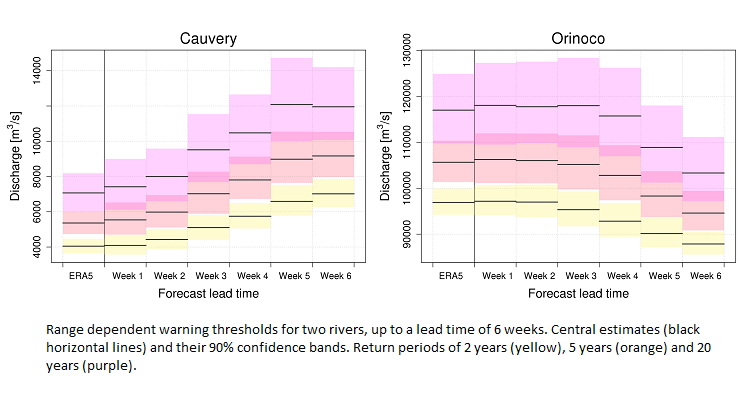Improving the global prediction of river flooding

A recently published research tackles early flood detection up to 6 weeks ahead through the use of adaptive flood thresholds for different forecasting ranges.
The research work reports on recent scientific advances focused on improving and extending the forecast skills of the Global Flood Awareness System (GloFAS). GloFAS is designed to forecast large scale river flooding worldwide by detecting river reaches where predicted streamflow has significant probability to exceed model-consistent warning thresholds in a 30-day forecasting horizon. Therefore, skillful detection of future flood conditions depends not only on accurate streamflow forecasts, but also on the estimation of suitable flood warning thresholds.
This research shows the development of a new method to estimate thresholds for medium-range flood forecasting. It provides evidence that flood thresholds for medium-range forecasting can take on significantly different values from thresholds derived from a hydrological reanalysis based on ERA5, a state of the art meteorological dataset which is used to initialize the daily forecasts. This is caused especially by the differences in the statistics of extreme precipitation between the meteorological reanalysis data and the weather forecasts, and which tend to increase with the forecast lead time. Findings show that the use of constant thresholds for 30-day flood forecasting, as in the current operational GloFAS setup, is statistically correct only in 30% to 40% of the river network.
The authors proposed a new framework for the early detection of floods, based on range-dependent flood thresholds, which are able to compensate for forecast drifts in the extreme values, particularly important over long forecast ranges. This represents a key step in the evolution of GloFAS and of similar systems, which may ultimately lead to the extension from the current 30-day to a 6-week forecasting range. Upcoming work, ahead of the operational implementation, will involve extensive testing and skill evaluation of the operational ensemble forecasts, to assess the limits of predictability of the system and compare the system skills to the current operational version.
By Alfieri Lorenzo June 19, 2019, 10:04 a.m.
